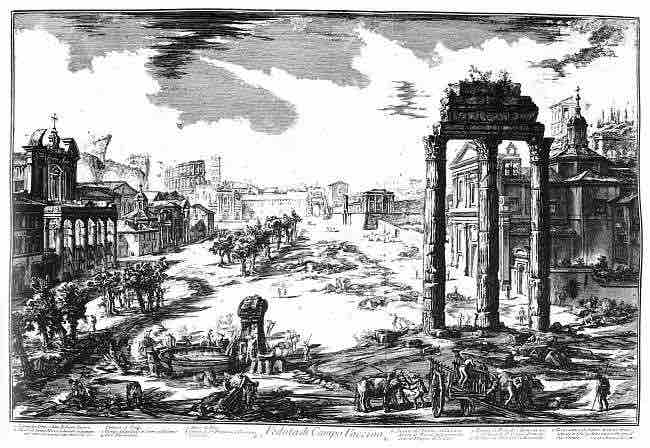Background
Following Constantine's founding of a "New Rome" at the city called Constantinople, the prominence and importance of the city of Rome diminished. The empire was then divided into two parts, east and west. The more prosperous eastern half of the empire continued to thrive, mainly due to its connection to important trade routes and became known as the Byzantine Empire, while the western half of the empire fell apart. While at times over the next several centuries, Byzantium controlled Italy and the city Rome, for the most part the Western Roman Empire, due to being less urban and less prosperous, was difficult to protect. Indeed, the city of Rome was sacked multiple times by invading armies, including the Ostrogoths and Visigoths, over the next century.
Roman Arts
The style of art during this time, which had already seen a stylistic change from Classical to Late Antique, continued to serve as means of political, religious, and imperial expression. The multiple sackings of Rome did not help the monuments and arts of Rome to remain unscathed. Furthermore, Roman monuments were raided of their marble, facades, décor, and columns for the building and decoration of churches throughout the city. Today when touring Rome, you can easily spot spolia of ancient Roman columns, capitals, and bases used to build and decorate medieval Christian churches. Parts of ancient Rome, especially the Republican Forum, returned once again to the cow pastures that they originally were at the time of the city's founding, as floods from the Tiber washed them over in debris and sediment .

Campo Vaccino
A view of the Roman Forum by Italian engraver, Giambattista Piranesi. This shows what the forum looked like-- an empty cow filed-- during his own time in the mid 18th century CE.
However, some aspects of Roman architecture survived after the rule of Constantine. For instance, the popularization of the Roman basilica as a model for Christian churches began under Constantine but continued to thrive even after his death and is an important feature of post-Constantinian Roman architecture.
Revival
Rome once more regained significance just prior to and during the Renaissance, as the papal authority paid great attention to embellishing the city and renowned artists were hired to study, rebuild, and decorate the eternal city of Rome.